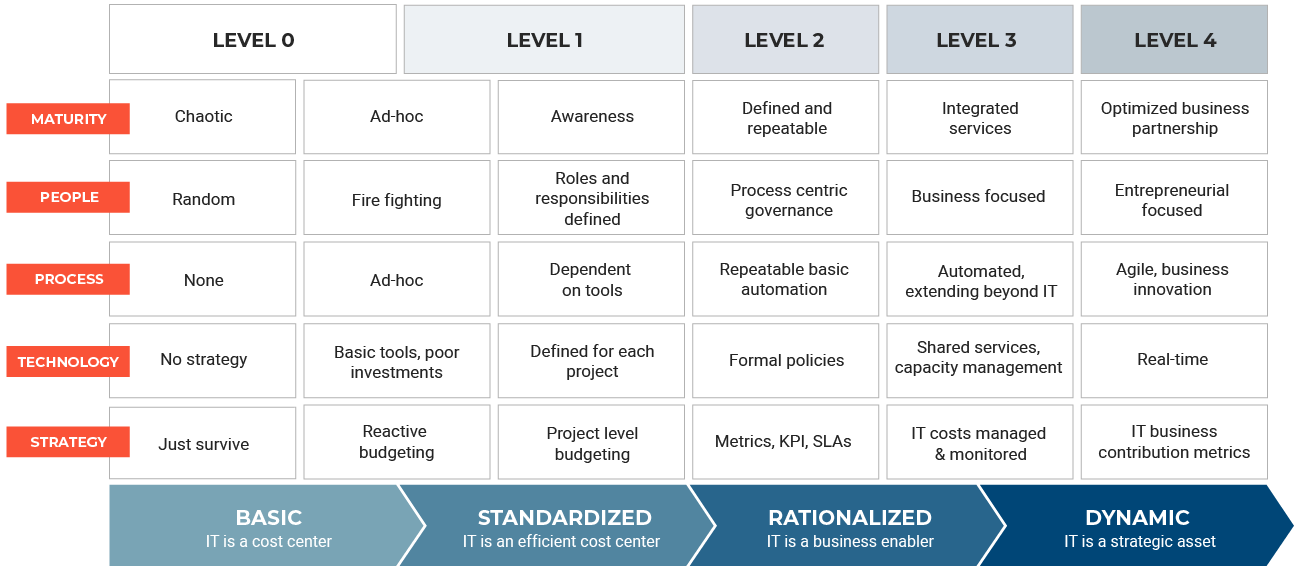December 14, 2022 - by Synoptek
The pace at which C-suite executives drive digital transformation efforts is incredible. According to a recent report, digital transformation spending is projected to reach $2.8 trillion by 2025. And although most CXOs are pumping up their technology strategy by modernizing legacy systems and adopting modern tools, only a paltry few of these strategies are business-driven. The pressure to simply “get done” with digital transformation often leads to a haphazard and random approach – which might seem to lead to immediate results but is not sustainable in the long run. To achieve guaranteed business results from your technology investments, you need to carry out a detailed and thorough technology assessment.
The Importance of a Business-driven Technology Strategy
Businesses across the world today are at different stages of technology maturity. While some consider technology as a strategic business asset that helps drive the organization to greater heights, others are treading carefully on the technology adoption path, leveraging innovations only in some aspects of the business. A large percentage of businesses still weigh the risks and benefits of embracing new technology, often taking a chaotic and ad-hoc approach to tech investment.

Irrespective of where you lie on the technology maturity model, a business-driven technology strategy is the first step in getting meaningful results from your technology investment. Since technology runs the world today, creating numerous opportunities for efficiency, growth, and scalability within the business ecosystem is critical. With a business-driven technology strategy, you can:
- Leverage principles, objectives, and tactics for using technology to easily and efficiently accomplish business goals
- Improve collaboration between business and IT teams and make the most of tech innovations that prioritize business objectives
- Have clarity on the roles and responsibilities for managing the tech landscape while also driving efforts toward future scalability
- Keep up with emerging market trends and customer expectations and stay a step ahead of the competition
- Build a roadmap that delivers the highest impact to the business while increasing both revenue and profitability
- Prioritize investments toward high-value projects, suspend or restructure those that don’t add value, and reallocate resources to optimize costs
- Put the right policies and procedures in place to deal with unforeseen events and reduce business risk by acting on real-time insights
Achieving Business Results from Technology Investments
If you want to achieve real and tangible business results from technology investments, you need to opt for Business Consulting Services to carry out a detailed technology envisioning assessment that helps you prioritize your goals, identify areas of improvement, and enable better communication.
Here is a three-step process that can help you in driving meaningful outcomes:
1. Business And Technology Review
Unless you understand where you are, you can never reach where you want to be. Therefore, the first and foremost step in the technology assessment process is conducting a business and technology review. Carrying out a detailed and thorough review of your existing technology environment, challenges, and future goals will help establish a plan to improve the efficiency and effectiveness of business operations. Such an assessment of People, Processes, and Technology will also help gauge IT alignment to the core business so that attention is focused on where the greatest impact can be made.
2. Analysis And Strategic Planning
Once a comprehensive review is carried out, the next step is to enable strategic planning. Leaders need to come together to define their technology vision for the future and orient it with their organization’s goals and objectives. They also need to establish the sequence in which technology should be implemented, and goals should be realized while accumulating the required budget, so that the organization can reach its stated vision.
3. Implementation Planning
The next and final step in the technology assessment process is implementation planning. This includes clearly understanding the recommended timeframe, sequence, and estimated cost of improvements to evolve the business, adapt to a hyper-competitive marketplace, stay on top of trends, and drive revenue. Make sure to consider technology as a foundation on which your growing business can be built. Develop and execute a clear and strategic IT roadmap with priorities that are closely linked to business goals – so you can transform IT capabilities into drivers of business value.
Rethink Your Business-driven Technology Strategy
To see your technology investments bear fruit, you must build a technology strategy that enables your business. Undertaking a detailed and comprehensive technology assessment that ties technology investments directly to business outcomes is the only way to reach new customer segments, strengthen your existing brand and community, and multiply your revenue over time.




